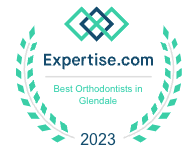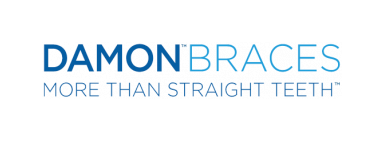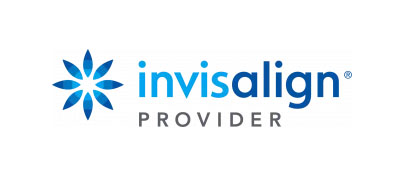Often, when people think of braces, the first thing that comes to mind is a treatment for teenagers. However, just because it’s common to see youth straightening their teeth, this type of orthodontic work is not exclusive to any one population. Still, a lot of adults can be hesitant when it comes to wearing braces.
Thanks to modern dental advancements, there are many different options available to you. For more information about braces alternatives, get in touch with our local dental practice today!
Different Alternatives to Braces
It’s never too late to take control of your oral health. Undergoing orthodontic work helps repair not only the functionality of your teeth, gums, and jaw, but it improves the cosmetic appearance of your smile as well. This specialized branch of dentistry offers multiple adult braces options to those who are interested in this type of dental care. Such options available to you are:
Alternative 1: Clear braces
Clear or ceramic braces are very similar to traditional braces but instead of a mental framework, ceramic is used. This material is also very durable. Additionally, it doesn’t accumulate many stains, so you won’t have to worry about what you’re eating and drinking.
To make this option that much more appealing, several celebrities have received clear braces including Tom Cruise, Serena Williams, and Prince Harry!
There are multiple benefits to having clear braces, such as the fact that they are also a reliable means to straighten your teeth; you won’t need to seek further orthodontic treatment afterward. The ceramic framework will blend in with the natural color of your smile, so you won’t have to worry about feeling self-conscious while wearing them. Your speech won’t be affected either.
The major drawbacks to this method are the same as receiving traditional braces: it’s more difficult and time-consuming to brush and floss your teeth, you’ll have to make some adjustments to what you eat during the first few weeks, and your mouth will have to adjust to the ceramic framework.
Alternative 2: Metal Braces
Also known as traditional braces, metal braces are just what the name implies: a customized metal framework composed of brackets, arch wires. and small elastic bands that are placed over the top of your teeth. This type of braces are very reliable and certainly get the job done. Don’t believe all the stereotypes you hear about how bulky metal braces are and the like; over the years they’ve been made sleeker and more comfortable to help you adjust to this long-term commitment.
The primary benefits of receiving metal braces are they’re strong and reliable – after all, there’s a reason that they’ve stuck around and are frequently recommended by dentists. Also, a lot of people like or don’t mind the appearance of metal braces in their mouths. Finally, traditional braces may be the most affordable option for you compared to other, more customized devices.
It’s important to note that there are a few drawbacks to metal braces, as much as there are advantages. It is a bit more difficult to maintain good oral hygiene with metal braces because you need to brush around the brackets and arch wires. Crunchy and sticky foods should typically be avoided at least for the first few weeks; your mouth requires some time to get used to your braces, so there will be some discomfort in the beginning.
Talk to your dentist to learn more about receiving metal braces.
Alternative 3: Invisalign
Invisalign is the most well-known form of clear aligner therapy. As the name indicates, clear aligner therapy utilizes removable trays made of high-grade dental plastic. These trays fit over your top and bottom row of teeth and exert constant pressure on them. This pressure in turn stimulates bone movement, and your teeth will eventually shift into a healthier position.
For those of us receiving braces later in life, Invisalign is a great option to consider. A lot of advantages come with wearing Invisalign trays: they’re hardly noticeable (if at all!), and they’re designed to be removed, which means that you can brush, floss, and eat as you normally would. The special plastic they’re fabricated from won’t irritate your gums, and you’ll need to come in for fewer dental checkups.
Yet, no orthodontic treatment is 100% perfect. With Invisalign, to have results, you need to wear your trays for at least 22 hours a day. You may talk a bit funny at the start because you’re not used to having the trays in your mouth. Lastly, if you’re forgetful about putting in your trays, Invisalign may not be the best option for you.
With all that said, it’s very important that you book a consultation with your dentist prior to receiving any type of orthodontics in Phoenix. They’ll be able to identify what type of treatment is best suited to your unique case, as well as walk you through the process from beginning to end. No matter your age, you deserve to love your smile. At E&S Orthodontics, our staff is here to help you with that. Don’t hesitate to call or visit our website to get started today!
Frequently Asked Questions:
Q1. What about porcelain veneers?
A. Porcelain veneers are a cosmetic dental treatment that is done to help repair the aesthetic look of your teeth. This strategy is good if you’re looking to correct more minor imperfections like the size and shape of your teeth, hide stains, or if your teeth are cracked or chipped.
Orthodontics is first and foremost a means to restore the functionality of your smile. This entails how you bite and chew. Veneers are not an alternative if you need to remedy structure problems related to your oral health.
Q2. What’s a retainer?
A. A retainer is a type of dental guard that a lot of people receive once their braces have been removed. Typically, they’re worn at night and ensure that your teeth remain in their places. Retainers can be removable, or they can be permanently installed in your mouth.
Q3. How long do I have to wear braces for?
A. It depends on your dental case and the extent of care you need. However, on average, most people wear braces for around eighteen months.



